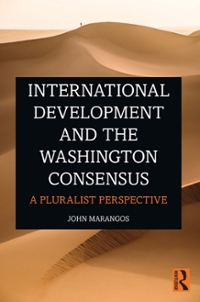Question
THE PROBLEM At 4.35 am on 4 December 2016, which happened to coincide with a full moon, a magnitude 6.7 earthquake struck about 30 kilometres
THE PROBLEM
At 4.35 am on 4 December 2016, which happened to coincide with a full moon, a magnitude 6.7 earthquake struck about 30 kilometres west of Mercator de Terremotia, at a relatively shallow depth. The quake was caused by movement along a previously unrecognised minor fault line that had not been mapped. The fault line lies deep under alluvial soils laid down by a river coming out of a large mountain chain. The earthquake caused significant building damage to the city, especially to old masonry buildings, but no direct fatalities. In the subsequent months, many smaller aftershocks (generally < magnitude 4) followed.
Despite Terremotia's long history of earthquakes, good science and monitoring systems, the "Mercator earthquake" and its aftershocks caught everyone by surprise because the city had not been considered to be at high risk. The surprise opened the space for speculation, in which astrologers, psychics and other "alternative forecasters" moved in. Using social media platforms, such as YouTube channels and Facebook pages, these forecasters attracted dedicated followers. Some of them claimed that the earthquake was due to the full moon and predicted another and much larger earthquake in or near Mercator, would happen one day when other astrological features would be aligned to cause a "greater pull".
At the same time, scientists at NGI were providing updated information about risk of further earthquakes, the location and strength of aftershocks, as well as more detailed information about the type and features of earthquakes. They were using national TV, radio, newspapers, web-based channels, and giving public talks in schools, community halls and other places. In spite of their work, there was much appetite for "alternative" information, which the media delightedly promoted. This all was happening in an atmosphere of pessimism and economic downturn. Although Terremotia had recovered from the effects of 2008 global financial crisis, the falling demand for the ore from its mines had a negative impact on employment and economy. There were growing fears that tourism would suffer because of earthquakes. Mercator Airport is the largest and busiest airport in Terremotia and its harbour an important hub for cruises, and the bookings are already dropping.
In April 2017, a local radio station aired a weekly programme in which a media celebrity Simon Forman predicted a much bigger earthquake would happen in the next few days. Forman had more authority than other "alternative forecasters", because he had long been known as the author and advocate of an "alternative weather" model and had a regular "alternative science" programme, focused on subjects such as astrology, on the radio. Forman maintains a subscription-based website through which he sells weather forecasts, consults businesses and publishes annual weather almanacs. He has an audience among farmers in his own province (close to Mercator) and among recreational fishermen.
Two days after Forman's radio show and his prediction, a strong earthquake (Magnitude 7.3) struck some 200 kilometres north of Mercator. It was mostly felt in the sparsely populated mountainous pastoral area bordered by a national park. The epicentre was in the area of known high earthquake risk: ruptures along several fault lines were observed, including some previously unknown ones. While again there were no human victims, and the infrastructural damage mostly affected regional roads, the earthquake dislocated hills, river and sea bed by several metres. The apparently successful prediction earned Forman major media attention. Major newspapers, TV, online media all give him space to discuss his model and communicate predictions. On 20 July he tweets a prediction of a major earthquake close to Mercator "around the full moon on 1 August". The earthquake, according to him, will be much worse than either of the large preceding ones and it is likely to cause large loss of life. Forman's prediction attracts huge media attention. On 22 July he is invited to a high-profile talk-show. The popular interviewer tries to counter Former's claims but his manner is perceived as aggressive and, contrary to the plans, Forman is perceived a sympathetic figure. Some public personalities are now pointing to a study, published in Nature just a few weeks earlier, according to which tidal stresses can exert additional strain on geological faults and trigger small earthquakes. The full Moon on 1 August also coincides with the Moon's closest approach to earth (perigee). Scientists at TerraNet however state that the risk of earthquake is not increased. Many citizens of Mercator decide to leave the city ahead of the predicted earthquake and a sense of panic is emerging. The financial centre of the country is essentially shutting down. There is a huge public pressure on the government to order evacuation.
"I am not trying to undermine TerraNet" says the mayor of Mercator, who has background in economics, "But their modelling shows that following the Mercator Earthquake of December the risk remains increased for a while, even a year. We had another big earthquake not so far in the meantime. What if the next one does strike when Forman predicted?"
The Prime Minister is calling the science advisor to help with the assessment of available evidence regarding the risk: should he try and stop the evacuation or not, and if so how to manage the public perception of risk and science communication.
Questions:
1. Identify the most important issue raised.
2. Give your personal reaction and credible advice to the policy maker addressing the issue.
Step by Step Solution
There are 3 Steps involved in it
Step: 1

Get Instant Access to Expert-Tailored Solutions
See step-by-step solutions with expert insights and AI powered tools for academic success
Step: 2

Step: 3

Ace Your Homework with AI
Get the answers you need in no time with our AI-driven, step-by-step assistance
Get Started


